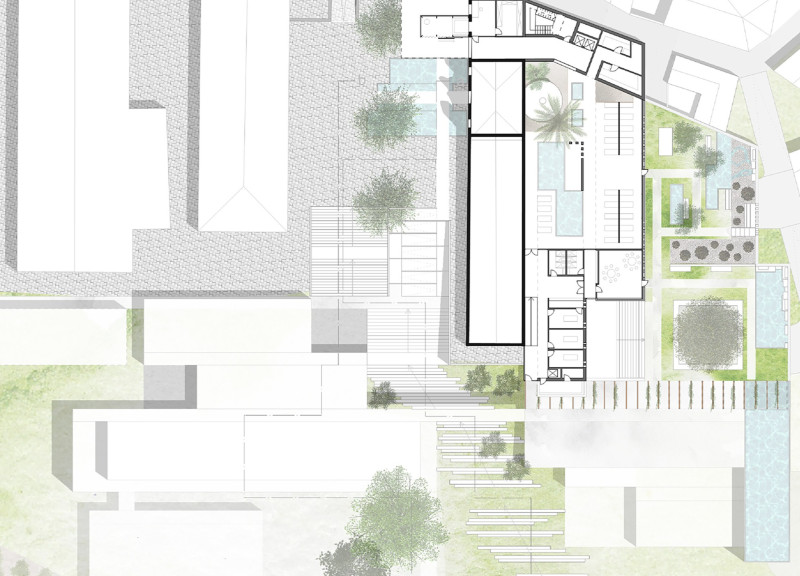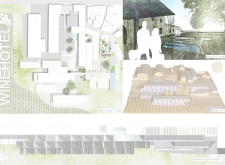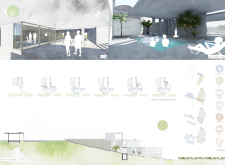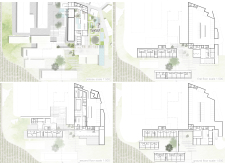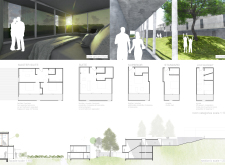5 key facts about this project
Functionally, the Wine Hotel is designed to cater to a variety of visitor experiences, combining private accommodations with communal spaces that encourage interaction. The layout is carefully organized to enhance privacy for guests while also providing amenities that invite community engagement. Guest suites and villas are strategically positioned to maximize their relationship with the surrounding landscape, offering views that connect residents with the vineyard environment.
The design of the hotel adopts a multi-level approach, which is particularly effective given the site's topography. By integrating different levels throughout the hotel, the design allows for an engaging flow between spaces, ensuring that each area maintains its unique character while remaining interconnected. This layering not only provides guests with diverse visual experiences but also enhances the comfort level by allowing natural light and ventilation to permeate interior spaces.
One of the key design elements is the extensive use of glass in the building's façades. This choice reflects a commitment to transparency and openness, creating a dialogue between the indoor environment and the lush landscape outside. The glass panels offer unobstructed views of the vineyards and surrounding nature, inviting the beauty of the outdoors into the hotel’s ambiance. This visual connectivity to the landscape not only enriches the guest experience but also allows them to appreciate the agricultural significance of the setting.
Materials selected for the construction of the Wine Hotel have been carefully chosen to resonate with the local context. Reinforced concrete serves as the primary structural material, providing longevity and allowing for creative flexibility in design. The incorporation of natural stone elements enhances the aesthetic aspect while establishing a connection with the local geological features. The use of wood in both structural and decorative applications adds warmth, contrasting effectively with the concrete and glass components.
The design also embraces sustainability as a fundamental principle. By implementing energy-efficient systems and incorporating features such as green roofs, the project reduces its ecological footprint while supporting local biodiversity. These green infrastructures play a significant role in promoting environmental responsibility, reflecting a growing trend in contemporary architectural practices.
Unique design approaches are evident throughout the hotel. The various communal spaces—including terraces, courtyards, and social lounges—are thoughtfully arranged to facilitate gatherings and community events. This design not only reinforces the social aspect of winemaking but also fosters a sense of belonging among guests. Water elements, such as reflective ponds and pools, serve as tranquil focal points that enhance the overall atmosphere of relaxation and serenity.
The Wine Hotel at Quinta do Monte D'Oiro stands as a well-conceived architectural project that exemplifies the harmonious relationship between hospitality and the cultivation of wine culture. By blending functional design with a deep respect for the surrounding landscape, the project offers a unique experience for guests. Each aspect, from architectural plans to sections, contributes to an overall understanding of how architecture can successfully intertwine with nature and community. Interested readers are encouraged to explore the project presentation for additional details and insights into the architectural designs and ideas that shaped this endeavor. The comprehensive examination of these elements will provide a deeper appreciation for the thought and craftsmanship that went into this exceptional project.


